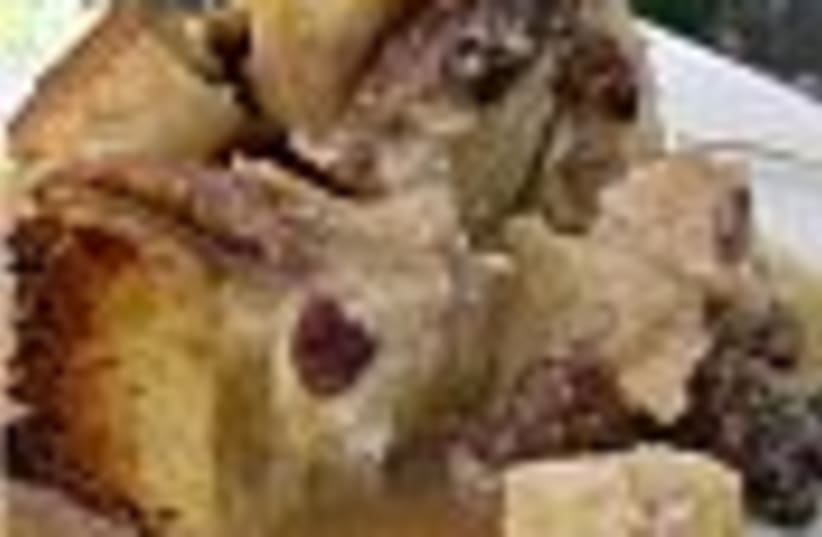Celebrated for its unique cuisine, New Orleans has long been a magnet for bon vivants.
In light of its French background, this is not surprising. For many years we, like many other food lovers, were eager to visit Louisiana's major city, famous for its favorite slogan: "laissez les bons temps rouler" or "let the good times roll." With its terrific restaurants, jazz clubs and lively night life, this is a place where people come to have fun. When the Newspaper Food Editors and Writers Association held their convention there in 1987, we jumped at the chance.
New Orleans's culinary heritage is based on Louisiana's Cajun-Creole cooking, the most distinct regional cuisine in America. In a new book, Emeril's Delmonico: A New Orleans Restaurant with a Past (Morrow, 2005), author Emeril Lagasse describes Creole cuisine, a blend of French, Spanish, American Indian and African, as "one of the most incredible styles of cuisine in the world." Creole cooks have created exciting dishes like jambalaya, an entree of rice cooked with sausages and chicken or seafood, like a peppery paella; gumbo, a spicy meat and vegetable soup with okra; and caf brulot - spiced coffee flamed with brandy.
Louisiana's Cajun cooking can be very spicy. Hot pepper sauces add zip to numerous dishes. Tabasco, the oldest and most famous hot pepper sauce in America, was invented here. We toured the Tabasco plant on Avery Island (near New Iberia, Louisiana) and saw huge barrels of fiery Tabasco peppers being aged with salt. You can't stay there for long; the hot pepper fumes can be overpowering! Subtler seasoning characterizes the French side of Louisiana cooking, featured in the city's most venerable restaurants. In certain eateries, such as the popular Galatoire's, we found that some dishes, like seafood gratins with thick, flour-based sauces, resembled old-fashioned French cuisine. Arnaud's, a historic restaurant specializing in French-Creole dishes, served cream of artichoke soup, quail with red wine sauce, and fish stuffed with seafood mousse wrapped in puff pastry.
Cafes are popular too. We liked the famous Caf du Monde, where tourists enjoy pillow-shaped beignets dusted with powdered sugar. We went for a stroll and admired the lovely wrought-iron balconies in the caf 's neighborhood - the French Quarter.
A highlight of our stay was a traditional southern brunch at the renowned Commander's Palace. Our menu featured eggs Sardou (poached eggs on creamed spinach with hollandaise sauce), sauteed veal in creole sauce (tomato sauce with onions, peppers and hot sauce) and grits (a cornmeal dish resembling polenta). The grand finale was a souffl -like bread pudding with a rich whiskey sauce.
Lagasse writes that Delmonico's served a bananas foster bread pudding with vanilla ice cream and caramel sauce. We hope Delmonico's will soon reopen, and that before long, we will again visit and enjoy the city's tempting treats.
Pecan bread pudding with fruit and chocolate chips
Inspired by the New Orleans style, we like to eat this rich pudding with a creamy whiskey sauce. You can substitute applesauce, sour cream or whipped cream. Serve the dessert warm, and the sauce cold or at room temperature.
100 grams stale halla bread, crust
removed
11/4 cups milk
7 Tbsp. sugar
11/2 tsp. ground cinnamon
225 grams apples
1 tsp finely grated orange zest
2 eggs, separated
1/4 cup raisins, rinsed with hot water
1/2 cup chopped pecans
1/3 cup semisweet chocolate chips
2 Tbsp. butter, cut in small pieces
Preheat oven to 200 C. Grease a 5-cup baking dish. Cut bread in cubes and put them in a medium bowl. Bring milk to a simmer in a small saucepan and pour it over bread. Let stand a few minutes so bread absorbs milk.
Mix 1 Tbsp. sugar with 1/2 tsp. cinnamon. Peel and core apples.
Quarter them and slice very thin.
Mash bread with a fork. Stir in 4 Tbsp. sugar. Add orange zest, 1 tsp. cinnamon, egg yolks, apples, raisins, pecans and chocolate chips. Mix well.
Beat egg whites to soft peaks. Beat in remaining 2 Tbsp. sugar and whip until stiff and shiny. Fold whites, in two portions, into bread mixture. Transfer to baking dish. Sprinkle with reserved cinnamon-sugar mixture. Scatter butter pieces on top.
Bake pudding for 40 to 50 minutes, or until a toothpick inserted in center comes out dry. Serve hot or warm.
Makes 6 servings.
Whiskey sauce
6 large egg yolks
1/4 cup sugar
11/2 cups milk
2 Tbsp. whiskey
Whisk egg yolks lightly in a large bowl. Add sugar; whisk until smooth. Bring milk to a boil in a heavy medium saucepan. Gradually whisk hot milk into yolk mixture.
Return mixture to saucepan, whisking. Cook over medium-low heat, stirring mixture and scraping bottom of pan constantly with a wooden spoon, until mixture thickens slightly and reaches 75 to 80 C on an instant-read or candy thermometer, about 5 minutes. To check thickness of sauce without a thermometer, remove pan from heat. Dip a metal spoon in sauce and draw your finger across back of spoon. Your finger should leave a clear path in mixture that clings to spoon. If it does not, cook another 30 seconds and check again. Do not overcook sauce or it will curdle.
Immediately strain sauce into a bowl. Stir about 30 seconds to cool; cool completely. Refrigerate at least 30 minutes before serving. Just before serving, stir in whiskey.
Makes 6 to 8 servings.
Faye Levy is the author of Feast from the Mideast (HarperCollins) and of the three-volume Fresh from France series (Dutton).
| More about: | French Quarter, Louisiana, Mardi Gras |
